From static classicism to hellenistic dynamism III Lysippos, a whole new perspective in art.
Lysippos is considered the last representative of the younger classical era, with the help of his groundbreaking works, he announced the arrival of a new age in the art of Hellenism (Makowiecka, 1987: 115).At the beginning of the Hellenistic era, Athens loses its leading role in art. The artists' emigration contributes to the strengthening of the sculptural workshop in other centers. Art has become more accessible and its market has expanded. Sculpture from the period around the year 300 BC, however, did not cut off the style from the one from 50 years ago. The main artistic centers were influenced by the heirs of the masters of the late classical period. Changes in the sculpture can be seen in Lysippos of Sicyon, whose style we can get to know thanks to the relations of Pliny (Natural History).
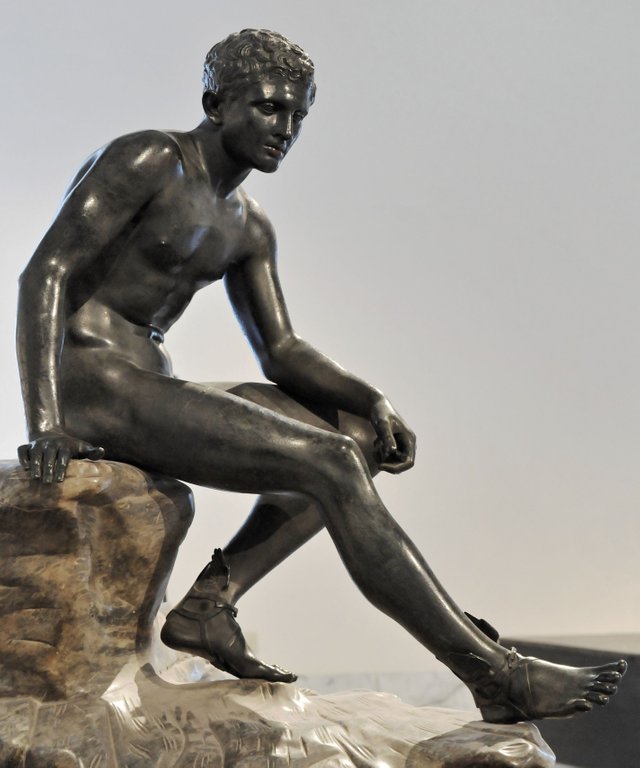
Resting Hermes by Lysippos. Cast in Pushkin Museum, Moscow. The original was found in Herculaneum in the Villa dei Papiri, and is now to show in the National archeological museum, Napoli, Author: Marie-Lan Nguyen
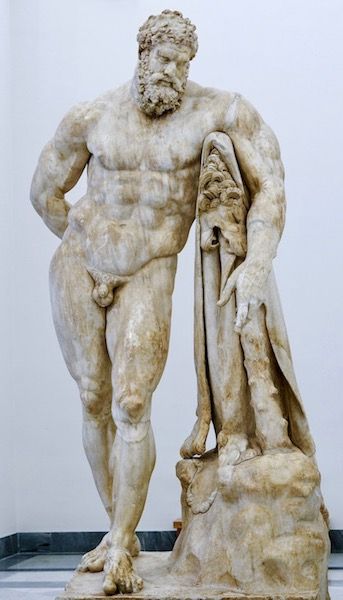
Statue of Herakles at rest carrying fruit in his right hand. Roman copy of the Imperial era after a Greek original of the Early Hellenistic era Glycon of Athens (copy), Lysippos (original 330-320BC), Author: Marie-Lan Nguyen
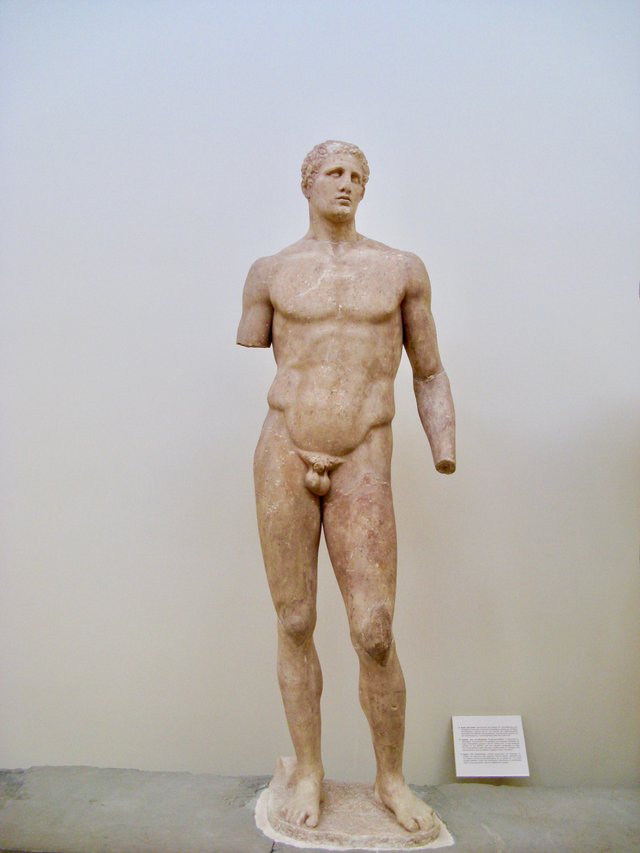
Statue of Hagias, possibly by Lysippos or his son Euthykrates, from the votive of Daochos II in Delphi. Marble copy of a bronze original,circa 337 BC, Delphi Archaeological Museum, Autor: Yair Haklai
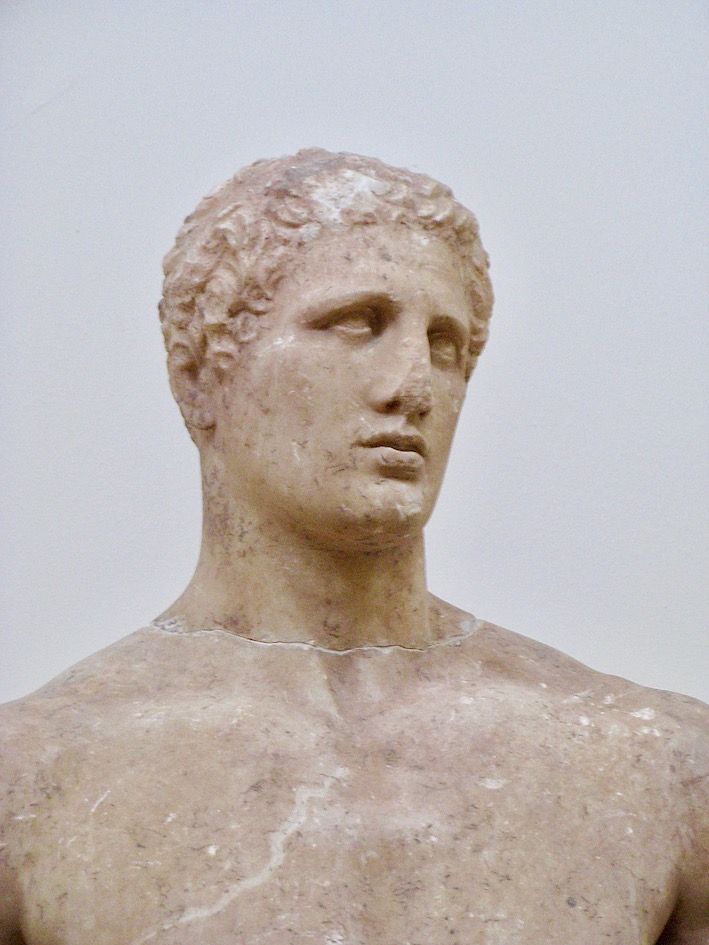
Detail Hagias, possibly by Lysippos or his son Euthykrates, from the votive of Daochos II in Delphi. Delphi Archaeological Museum Author Yair Haklai
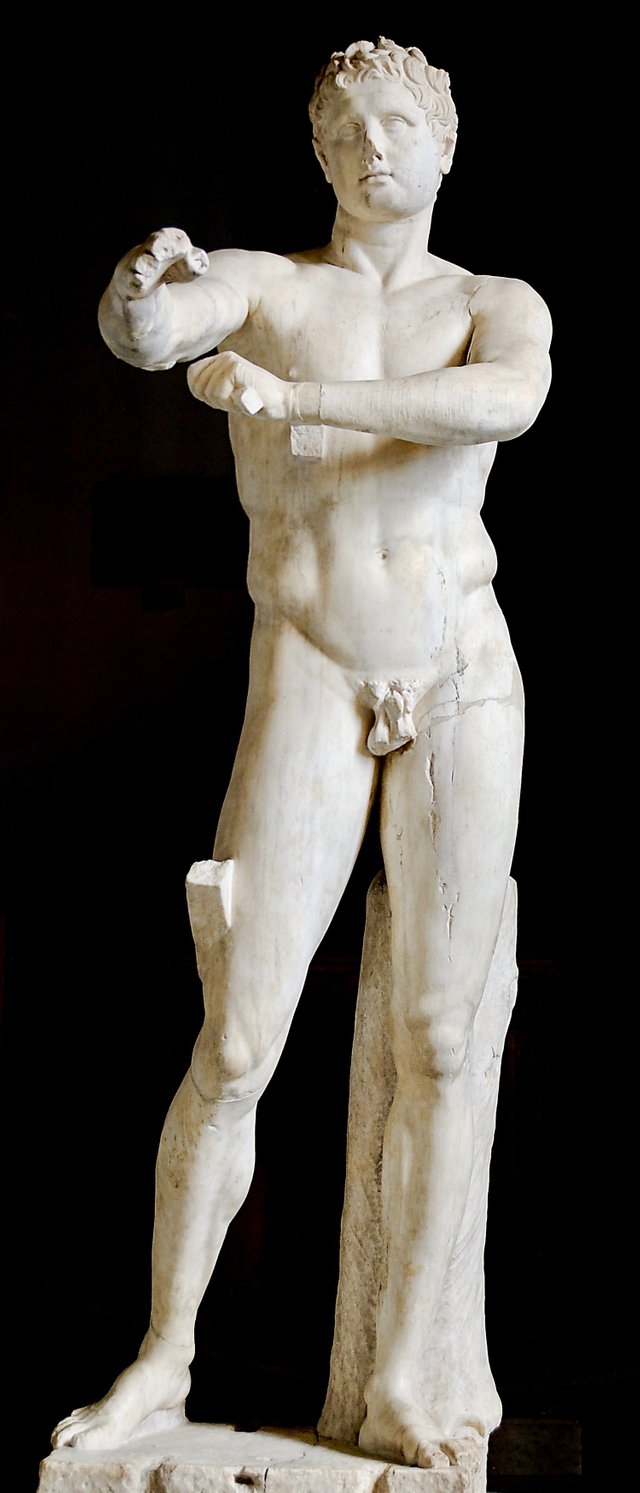
So-called “Apoxyomenos” (“the Scraper”). Marble, Roman copy of the 1st century AD after a Greek bronze original ca. 320 BC. From the Trastevere in Roma Author: Marie-Lan Nguyen
The athlete raises his right hand over the viewer's head. His face is idealized, he looks like a portrait and does not show shame, even though he is naked. The ideal of modesty goes into oblivion, replaced by the ethos to courage (Stewart, 1991: 187), to which Aristotle refers in Nicomachean Ethics (book IV).
A man is considered to be brave if he expects much and deserves much (...) He who does not demand much and deserves little is a sophron, but he is not brave - Aristotle, Nicomachean Ethics, book IV.3
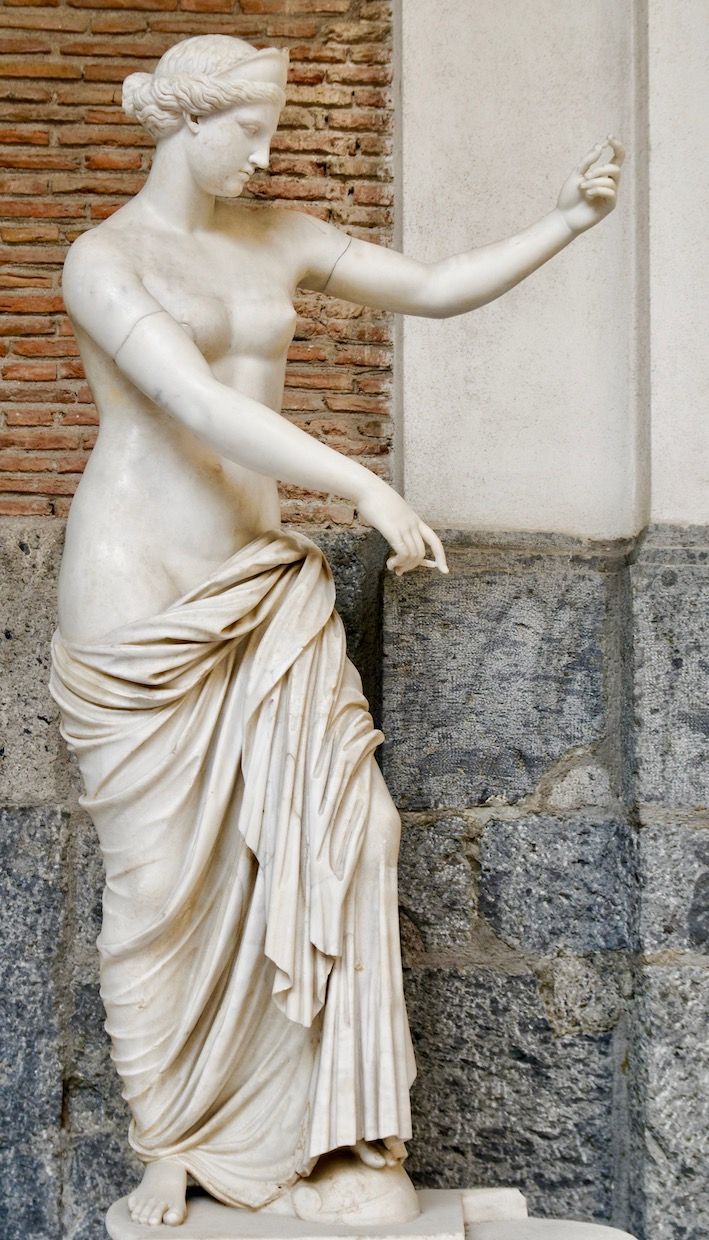
The Aphrodite of Capua, An earlier version of the type of the Venus de Milo Roman copy after an Early Hellenistic original, Author: Marie-Lan Nguyen
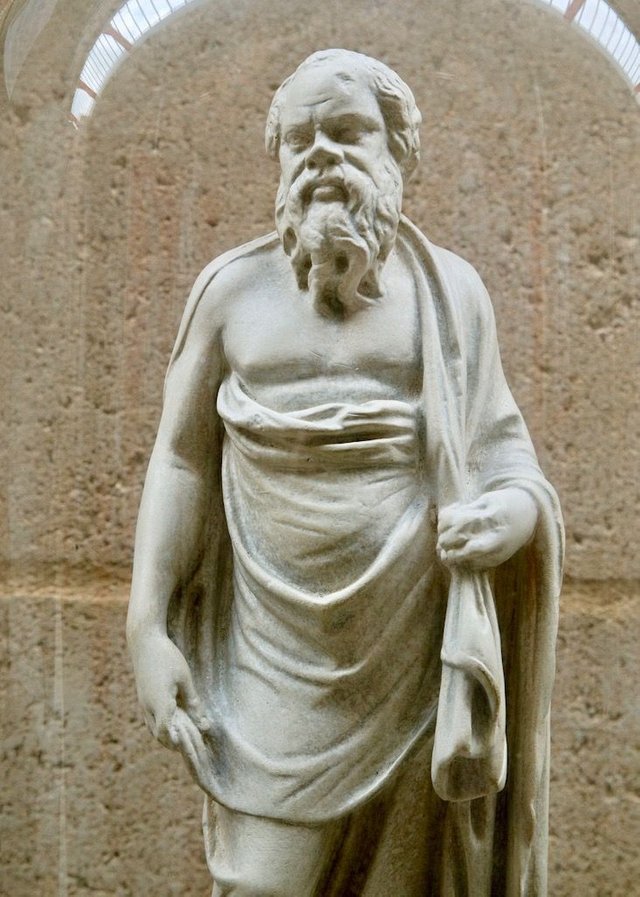
Statuette of Socrates.Plaster cast. Original is in British Museum, London. Cambridge Museum of Classical Archaeology: Author Zde
Was Alexander an ideal example of the new ethos of the great spirit and valor? As noted by Stewart (1991: 188), this great individualist certainly influenced Lysippus imagination with his passion for "new and unexplored", unconventional in reasoning and feeling.
Lysippus huge success contributed to the fact that Philip II gave him the exclusive right to portray the ruler.
to be continued...
References
Images: sources linked below
Photo: @highonthehog
Makowiecka, E. Sztuka grecka – krótki zarys, Wydawnictwo Uniwersytetu Warszawskiego, Warszawa, 1987
Pliny,the Elder; Jex-Blake, K Urlichs, H Ludwig, The Natural History of Pliny; The elder Pliny's chapters on the history of art, London- New York, Macmillan and co., ltd. 1864
Boardman, J. (1993): The Diffusion of Classical Art in Antiquity, Princeton University Press, Princeton, NJ
Stewart, A. Greek Sculpture: An Exploration, Volume I: Text, Yale University Press, New Haven, 1991
Estreicher, K. (1973): Historia sztuki w zarysie, PWN, Krakow
Arystoteles, Etyka nikomachejska, tlum. Daniela Gromska, ks. IV.3 Wydawnictwo Naukowe PWN, Warszawa 2007

Hello highonthehog!
Congratulations! This post has been randomly Resteemed! For a chance to get more of your content resteemed join the Steem Engine Team
Hello @highonthehog , I was designed to give advice to "steemit" users.
I recommend to increase this;
The most winning bid bot in the last 24 hours is "upme"
You can enter "steembottracker.com" to find more offers.
You can make "Resteem" and advertise to the followers of the whale accounts.
"Resteem Bot" for you;
✅ @byresteem ✅
long to no see your blog, nice posting, thank for the information. GB
HI There, yep I was out of the loop for a while, now I'm happy to be back with some new energy!! Take care.
The forth Dimension in which movement takes place. What a clever way to capture time. Its as if someone pressed a " Play" button on the sculptures. Brilliant !
Aint this cool !? thank you for reading and your cool comments on my posts ;)
Again a very informative post! I did not know that copy of Apoxyomenos is in Rome! Nicomachean Ethics is one of the best book I have ever read. Thanks for sharing
Hey man, yeah well, Rome is one of this places, where I would get lost in art, architecture, people, food, the rhythm of the city for a loong time- voluntarily ;) I must admit I came across ton of pretty good read during my studies, otherwise I don't know if I would just pick the masterpieces of such geniuses without this encouragement.